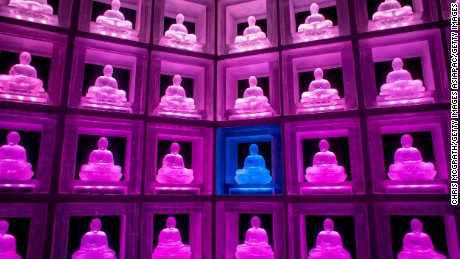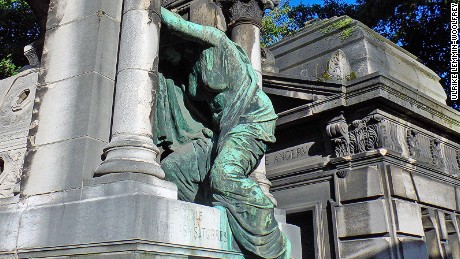
(CNN)By 2050, one in every four people in Asia-Pacific will be over 60 years old, according to the United Nations.
At the same time, 188,000 people per day are flocking to urban areas, putting huge pressure on real estate.
With more people dying and less space available, architects and city planners are imagining bold and modern ways to bury the departed, which are both efficient and respectful.
From conveyor-belt columbarium to floating cemeteries and even space burials, the Asian funeral scene is undergoing an exhilarating transformation.
Death might be inevitable, but it doesn"t have to be predictable.
High-tech deaths
Japan has seen perhaps the most dramatic changes to its burial scene.
Since the Edo period (1603-1868), inherited rural graves and, more recently, urban cemetery spots have been passed down through the generations of a family.
But the cost of keeping a burial plot has skyrocketed in recent years. Today, a spot in prestigious Aoyama Cemetery, in Tokyo, costs $100,000, while even locker-style columbarium -- called nokotsudo -- can fetch $12,000 at a centrally located Buddhist temple.
Furthermore, with single households in Japanese on the rise, reliance on an inherited burial site is less practical.
The Ruriden Byakurengedo columbarium, in Tokyo"s famous shopping district of Shinjuku, is one high-tech alternative updated to suit modern life in Japan.
From the outside, Ruriden looks like a traditional Buddhist burial building with wooden doors and gracefully curving eaves.
But upon swiping an electronic pass card to enter, the doors swish open to unveil a dazzling display of 2,045 LED-lit Buddha statues. The relevant Buddha glows a different color, guiding each visitor to the niche that houses their loved one"s remains.
Not an incense stick or memorial plaque is in sight.
"Space is not just about technology, it is a beautiful landscape that can be used to create poetic celebrations," former NASA space system engineer Thomas Civeit, the founder of Elysium Space, tells CNN.
"Narratives about our souls traveling through the stars after we pass away already exist in Japan," explains Civeit, adding that about 50% of the US-based company"s customers are Japanese.
The first launch departed from Kauai, Hawaii, in 2015, with another scheduled for this year.
Families can use an app to track the orbiting satellite, and even see it with the naked eye, if wearing binoculars.
"New practices like these don"t come out of the blue," says Suzuki, also an adviser for Elysium Space.
"The space burial is a culmination of technological possibilities and the younger generation"s desire to write a new story about the afterlife journey."
CNN"s Junko Ogura contributed to this report from Tokyo.
Read more: http://edition.cnn.com/










No comments:
Post a Comment